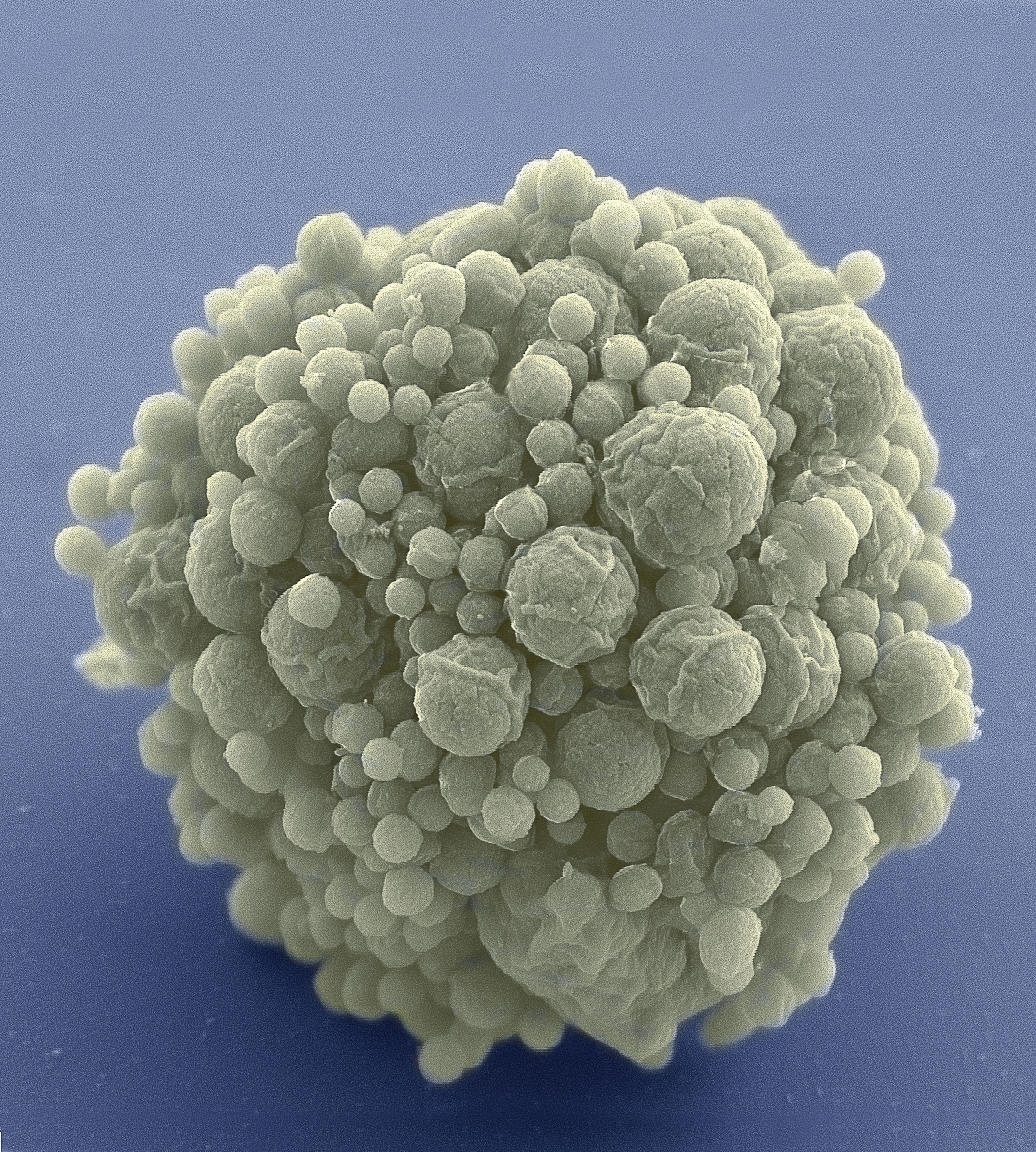
We Built the World’s Simplest Cell—but Dunno How It Works
The idea was daring, radical—dangerous even. Is it possible to build a living organism from scratch that’s smaller, simpler, more bare bones than anything now alive? Can we outsimplify nature itself and maybe get a peek at the raw machinery—nature’s secret formula—for the essence of life?
We—you and I—are dense with working parts. A human cell has more than 20,000 genes, fruit flies 13,000, yeast cells 6,000. But if we look for the simplest creatures on the planet, we will find a wee bacterium that lives happily in the digestive tracts of cows and goats: Mycoplasma mycoides.
It builds itself from a very modest blueprint—only 525 genes. It’s one of the simplest life-forms we’ve ever seen.
The Big Dare
So, suggested Craig Venter eight years ago, why not take the next step and try to engineer something even simpler? A new life-form with even fewer parts? Venter is perhaps biology’s most wily, most celebrated entrepreneur (famous for spurring the great race to build the human genome). He assembled an ace team of cell biologists and asked, If we put our minds to it, could we strip life so bare that we’d create a living, replicating creature with, say, only 500 genes? Or 400? Or 300? As Chubby Checker used to sing (while dancing the limbo years ago), “How lowwwww can you go?”
Last month, we got an answer.
On March 24, Venter and his team of scientists unveiled a man-made cell stripped down to—sound the trumpets!—473 genes. The simplest creature ever. They call it JCVI-syn3.0 (That’s the J. Craig Venter Institute, third try). It’s not Botticelli beautiful.

Actually, it’s kind of boring. “It doesn’t do anything magical rather than live, eat, and self-replicate,” Venter says. But then again, he crows, it’s “the first designer organism in history.”
The Big Shock
But it’s also—and no one saw this coming—deeply mysterious. Almost embarrassingly so. The folks who built this cell know it’s alive. It reproduces in its laboratory dish every three hours. Yes, it has 473 genes and almost every one is presumed essential. “You cannot live without all but one or two of the genes in this genome,” says Venter.
That’s how they built the thing: They started with a goat intestine bacterium, copied its chemistry, booted it up, and then, one by one, they looked at each and every gene and removed it. If the bacterium died, they put it back—it was necessary. If it wasn’t, out it went.
But now, staring at the 473 survivors, weirdly, Venter’s team has no idea why it’s these genes? Why are they the ones necessary for life? (For this creature’s life, anyway.) What exactly are they doing? And the answer is … they don’t know.
“It’s a very humbling set of experiments,” Venter says.
It’s how much they don’t know that’s really shocking.
Of the 473 genes, 324, or 68 percent, are clearly there for housekeeping. They make proteins, protect DNA, repair the cell’s membrane. The usual stuff.
Roughly 32 percent of the whole, or 149 genes, have no known function. “We don’t know what they provide or why they are essential for life,” Venter told Ira Flatow on PRI’s Science Friday.
Some of of “the Unknowns”—about 70—look structurally familiar. A gene might look, say, like it transports something in or out of the cell but, “What we don’t know is what does it actually transport,” Venter says. His team can fiddle with the cell’s environment to see if the transporters are still needed. There are trial-and-error ways to figure out what some of these genes do.
But then come the Total Unknowns—the black holes.
The 79 Mysteries
There are 79 genes in this group that no one has seen before. “We don’t know what they do,” Venter says. “That’s probably the most important finding,” he told Science Friday, “and it’s frustrating, it’s humbling … ”
When they began this project, Venter’s team imagined that after years and years spent comparing human genomes, mouse genomes, fruitfly genomes, yeast genomes, and plant genomes, biology had a working script for what produces life. They thought they knew the basic parts—or most of them. But the truth is, they didn’t.
“The scientific community has been basically suffering from the delusion that we did know all of biology,” Venter says. “We’re truly like aliens from another planet trying … to work out what these parts do.”
Even more humbling, these “unknown” genes have been doing what they do for millions of years (or, as the biologists say, they’ve been “conserved” by evolution) for some important reason.
So how could we not recognize them? How could the simplest life-form ever be one-third unknown?
There’s something about the essence of life we’ve missed, thinks Venter.
Perhaps, he says, life isn’t built from independent parts, like something in a machine shop. Maybe you can’t take a bunch of well-known genes, clamp them together, each one doing its own thing, and then, when you tighten the last screw, suddenly—SHAZAAAM!—a new creature sparks into being. Instead of focusing on genes, maybe we should consider the whole operating system—not the genes but the “genome,” a functioning whole.
Life may not be machine-like. We may be orchestral.
Genes whisper. They amplify. They turn other genes on and off and make them louder, softer, even silent. They cause cascade effects, sending notes through the system that loop back, creating loops within loops. A living thing may be a constantly changing melody, orchestrated by its constantly changing parts.
For too long, Venter thinks, biologists concentrated on genes for this and genes for that. “We can’t just look at the function of a gene,” he says. What those 79 mysterious genes may be doing—some of them, anyway—is they may be pulling the parts together so they fit, compose, and hum themselves into being.
How they do that may take us a while to figure out. Maybe a long while. Life, it seems, is darkly (richly?) complicated.